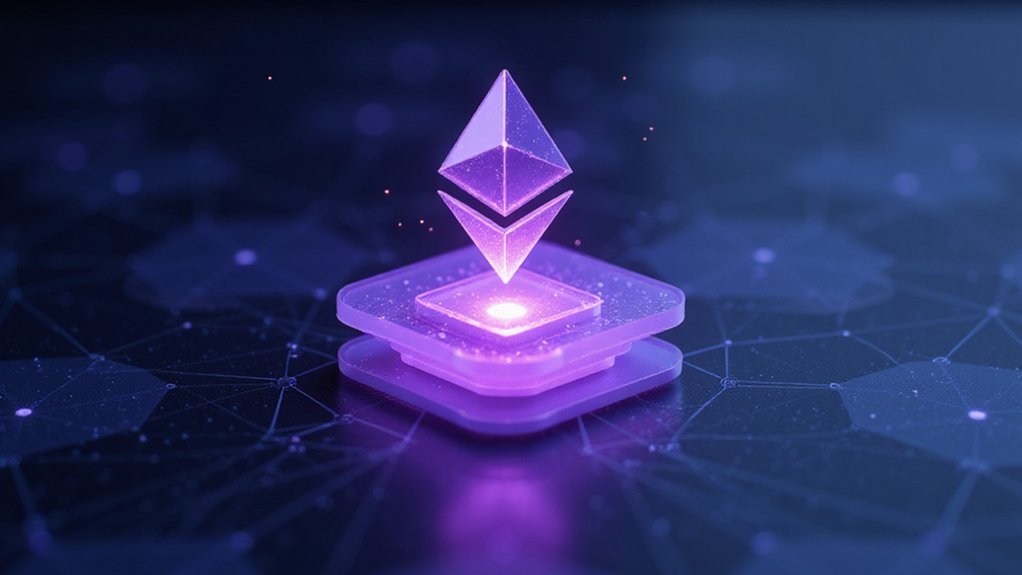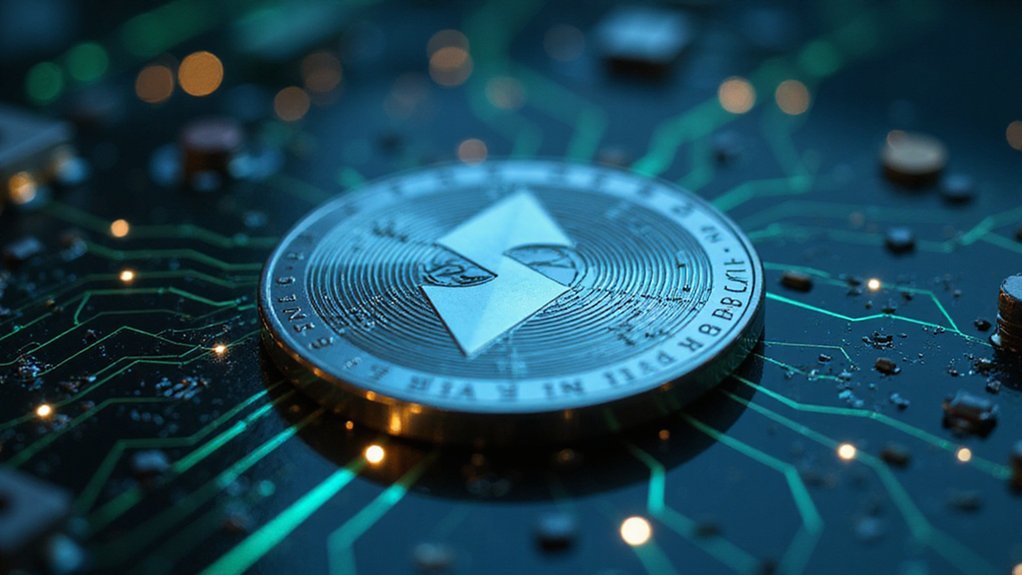Polygon is a layer-two scaling solution for Ethereum that addresses network congestion through sidechain processing. It inherits Ethereum’s security while enhancing transaction speed and reducing fees—a practical response to the infamous blockchain trilemma. The native MATIC token facilitates transaction payments, staking, and governance participation. Running on proof-of-stake consensus, Polygon offers seamless compatibility for developers looking to port Ethereum projects without the usual friction. The ecosystem’s evolution continues to attract DeFi protocols seeking refuge from prohibitive gas costs.

The meteoric rise of Polygon—a layer-two scaling solution designed to address Ethereum’s notorious congestion issues—represents one of blockchain technology’s more elegant responses to the perennial trilemma of decentralization, security, and scalability.
At its core, Polygon functions as a sidechain architecture that processes transactions off the main Ethereum blockchain before securing them back onto it, thereby alleviating Ethereum’s well-documented throughput limitations while inheriting its robust security features.
Polygon elegantly offloads Ethereum transactions through sidechain architecture, resolving congestion while maintaining security inheritance.
MATIC, the network’s native cryptocurrency, serves multiple functions within the ecosystem—from transaction fee payments to staking for network validation and participation in governance decisions.
This multi-utility token has gained considerable traction on major exchanges like Coinbase, where market participants can acquire, liquidate, or stake their holdings.
The network’s proof-of-stake consensus mechanism (a welcome departure from energy-intensive proof-of-work models) not only enhances transaction processing efficiency but also contributes to a more environmentally sustainable blockchain infrastructure. The system rewards validators with POL tokens proportional to their staked amount.
What distinguishes Polygon in the increasingly crowded blockchain space is its seamless Ethereum compatibility.
Developers can port existing Ethereum-compatible projects to Polygon with minimal friction, leveraging familiar tools while benefiting from drastically reduced gas fees and accelerated transaction finality.
This compatibility has catalyzed the migration of numerous decentralized applications across various sectors—from DeFi protocols seeking relief from prohibitive transaction costs to NFT marketplaces pursuing improved user experiences.
The platform’s implementation of zero-knowledge proofs further augments its technological proposition, enhancing both security and scalability through cryptographic validation techniques.
For enterprises contemplating blockchain adoption, Polygon offers customizable solutions that balance performance requirements with security considerations—a flexibility not readily available on the main Ethereum chain.
As decentralized finance continues its inexorable expansion and blockchain gaming gains mainstream traction, Polygon’s infrastructure serves as a critical conduit for scaling these applications without sacrificing the fundamental tenets of blockchain technology.
Like Base Crypto’s Optimistic Rollup technology, Polygon represents another innovative approach to solving Ethereum’s scalability challenges while maintaining security fundamentals.
With its focus on interoperability, performance optimization, and community governance, Polygon stands as a demonstration of blockchain’s evolutionary capacity to solve its own inherent limitations.
Formerly known as the Matic Network launched in 2017, the platform underwent a strategic rebranding to Polygon in early 2021 to better reflect its expanded vision and capabilities.
Frequently Asked Questions
How Does Polygon Reduce Ethereum’s Gas Fees?
Polygon reduces Ethereum’s gas fees through its Layer 2 scaling solution that employs side chains to process transactions off Ethereum’s main network.
This architectural sleight of hand allows Polygon to handle up to 65,000 transactions per second while charging mere pennies per operation.
Its Proof of Stake consensus mechanism further enhances efficiency, requiring less computational power than Ethereum’s previous system.
Additionally, Polygon implements transaction batching and zk-Rollups, bundling multiple operations into singular proofs—an elegant solution to blockchain’s persistent fee conundrum.
Can I Stake MATIC Tokens to Earn Passive Income?
Yes, MATIC tokens can indeed be staked for passive income generation.
The current yield hovers between 2.7-4.7% APY—hardly rivaling traditional investment vehicles, yet offering blockchain participation benefits.
Investors can delegate tokens to validators through the Polygon staking interface (compatible with MetaMask and similar wallets), thereby contributing to network security without the technical overhead of running nodes themselves.
The process involves a lockup period, with rewards distributed proportionally to delegation amount and duration.
How Does Polygon Compare to Other Layer-2 Scaling Solutions?
Polygon competes in a Layer-2 ecosystem increasingly dominated by Arbitrum and Optimism (which together command over 60% of the sector).
While these rivals excel in transaction optimization and scalability, Polygon distinguishes itself through robust interoperability features and developer-friendly tools.
Its multi-chain support creates a compelling value proposition, though its architecture raises more centralization concerns than some alternatives.
The competition has intensified as each solution races to balance throughput, security, and decentralization—the blockchain trilemma remains stubbornly persistent.
What Wallets Support Polygon Network and MATIC Tokens?
Polygon’s ecosystem boasts robust wallet support, with several options catering to diverse user needs.
MetaMask leads the pack through custom RPC configuration, while Coinbase Wallet offers user-friendly MATIC management.
For security purists, Ledger provides offline cold storage, and Kraken Wallet impresses with biometric authentication.
Mobile users gravitate toward Trust Wallet‘s dedicated Polygon functionality.
The ecosystem’s infrastructure extends further through specialized offerings from Ambire, Zerion, and Fireblocks—each bringing unique functionality to the Polygon network experience.
Is Polygon Vulnerable to Security Breaches or Hacks?
Polygon faces notable security vulnerabilities, primarily through its bridging infrastructure where assets traverse between blockchains.
The PoS Bridge’s 5/8 multisig wallet (upgradeable without timelock) represents a concerning centralization vector, while historical precedents like the Ronin and Wormhole exploits underscore bridge fragility.
Critical vulnerabilities have emerged in Polygon’s zkEVM components as recently as 2023.
Despite rigorous auditing practices and prompt patching, the ecosystem remains susceptible to zero-day exploits, validator misconduct, and multisig collusion risks.








